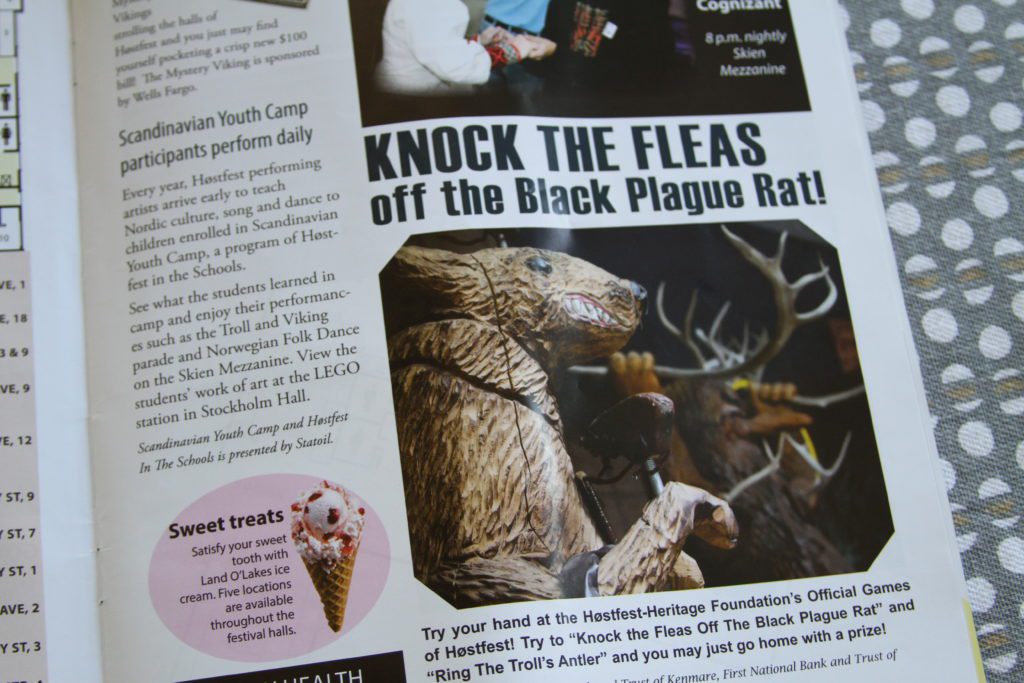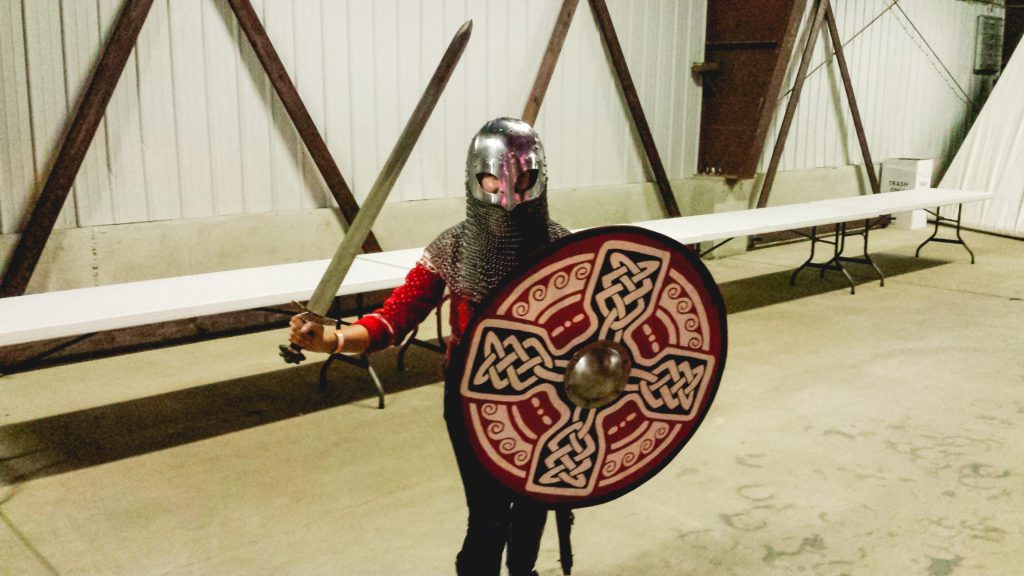

MINOT--It happened while my family was at Logger Fest over the weekend. I was standing to the side of the bouncy-house obstacle course, waiting for my son to come down the final slide, when I heard foreign speech behind me.
In another place I wouldn’t have thought twice about it. But this is Minot, and visitors who speak another language are uncommon. (No, a southerner’s drawl or Canadian’s accentuated “oo’s” don’t count.) Without thinking, I glanced over my shoulder to see a middle-aged woman and young man deep in conversation. When I saw their fair hair, beautiful light eyes, and glowing skin, it occurred to me. They’re Scandinavian. The Høstfest is nearly here.
To someone who is not from around here, it may not seem like a big deal—but the history, traditions, and connections created from the Norsk Høstfest are deep and important to those who have spent their lives in Minot. I know many locals who have developed friendships with visitors and vendors from Norway, Denmark, and Sweden through their involvement with the festival. That moment in the park reminded me ---- people really do come from all over to attend.
People around here get really jazzed about their Scandinavian heritage. And just like anything else, the more people who are enthusiastically all-in, the more exciting it looks to the rest of us. The Høstfest brings that enthusiasm front and center. It’s the time when locals give themselves over to their inner affinity for meatballs, Dala horses, and sweaters.
It’s the time when not-locals spend half our time wishing we were Scandinavian so we could fully understand what’s so special about trolls and lefse—and the other half wrinkling our foreheads trying to pronounce “rømmergrøt”, and wondering how an Oofda Taco differs from a regular taco.

When we moved back to Minot in 2019, I was out of town for the festival, and the pandemic forced it into hiatus in 2020 and 2021. Like many others, I am anxious for its triumphant return next week.
The last time I was able to attend the festival was in 2015. At the time, we were on the brink of a military move, and I thought it would be the last Høstfest of my life. I spent time chatting with vendors and creating a “This American Life” style audio story to capture the experience. It’s one of my fondest memories. Elderly ladies coached my pronunciation while I ordered food, men reenacting a Viking battle let me try on their gear. Later, Geir Ness, the parfumier, told me how his mother inspired the signature scent in his line. He offered me a “purse-sized” bottle of the fragrance, Laila: the essence of Norway, and it’s the only perfume I’ve worn ever since. I learned about loom arts and sweater patterns, and when night came, I danced the polka to a band flanked with accordions.

That day may not be the typical festival-goer experience—but it sure was great. I’m not anybody special—I just took a special interest in something that is really important to someone else. I learned a lot of things that day, but one thing stands out: Høstfest people are eager to share. They want you to understand the hype. They want you to see the fun, to experience the culture in a way that blesses you. They want to talk to you, hear your questions, and engage. And everyone is so gosh, darn nice. This kind of human connection is precious in a world often divided. Let’s not take it for granted.
I’ve been asked recently if I have tips for attending the Høstfest. I don’t have many, but I’ll share what I’ve got:
Have fun, next week! To watch my experience at the Høstfest unfold, and more on creating a positive mindset—join me on Instagram (@amy_allender), or Facebook (@amyallenderblog.)